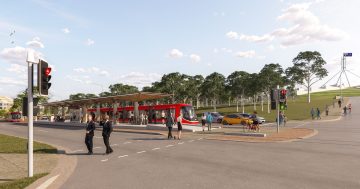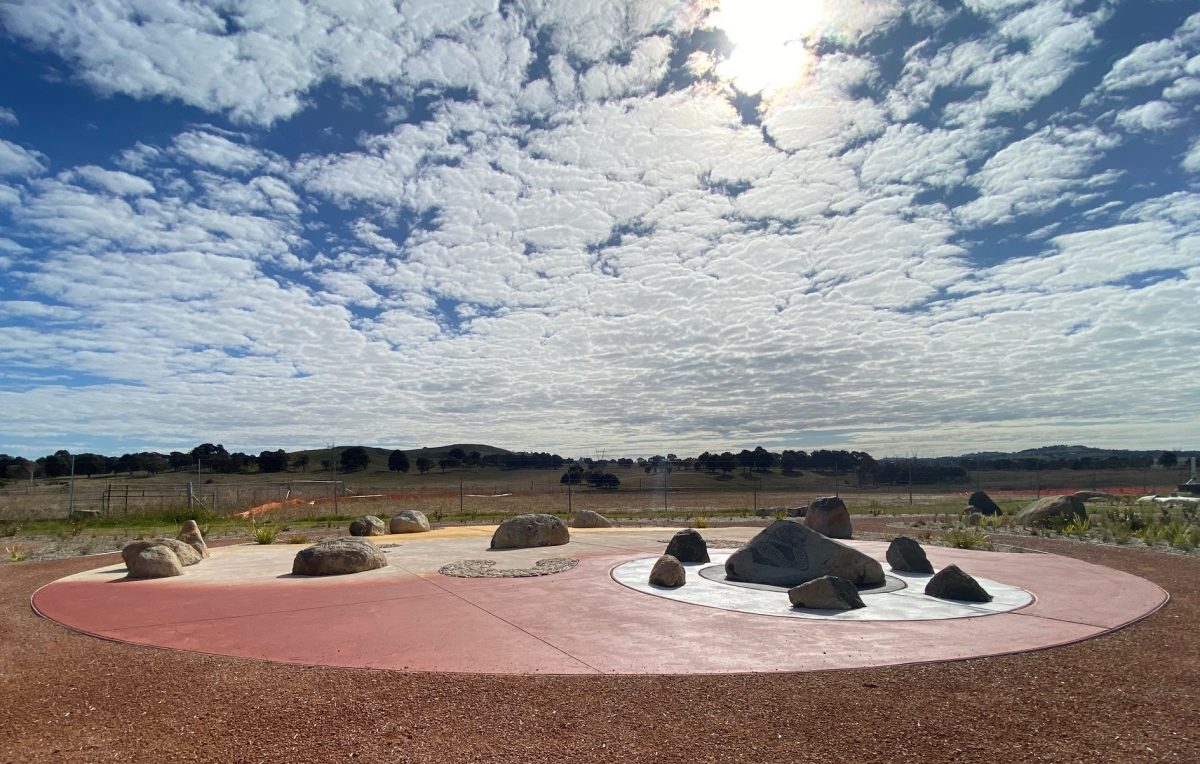
A cultural garden honours the Ngunnawal history of the land as a place for corroboree. Photo: Claire Fenwicke.
It’s been almost eight years in the making, but the restoration works at Jarramlee-West MacGregor Grasslands Nature Reserve have been opened with a smoking ceremony on Ngunnawal land.
Two hectares of grassland have been remediated as part of the project, along with the establishment of a cultural garden to mark the significance of the area to the Ngunnawal people.
Siblings Aunty Mary Mudford and Uncle Stephen Mudford were heavily involved in the consultation process, which they said was about recognising the land’s purpose as a place to collect food, gather for cultural activities and meet with other nations.
“This is quite a significant place for us, as when we met here we would have corroborees – not just the Ngunnawal community, as we met our fellow nations from surrounding country [as well],” Uncle Stephen said.
“We would trade here, have corroboree and celebrate each other’s communities.”
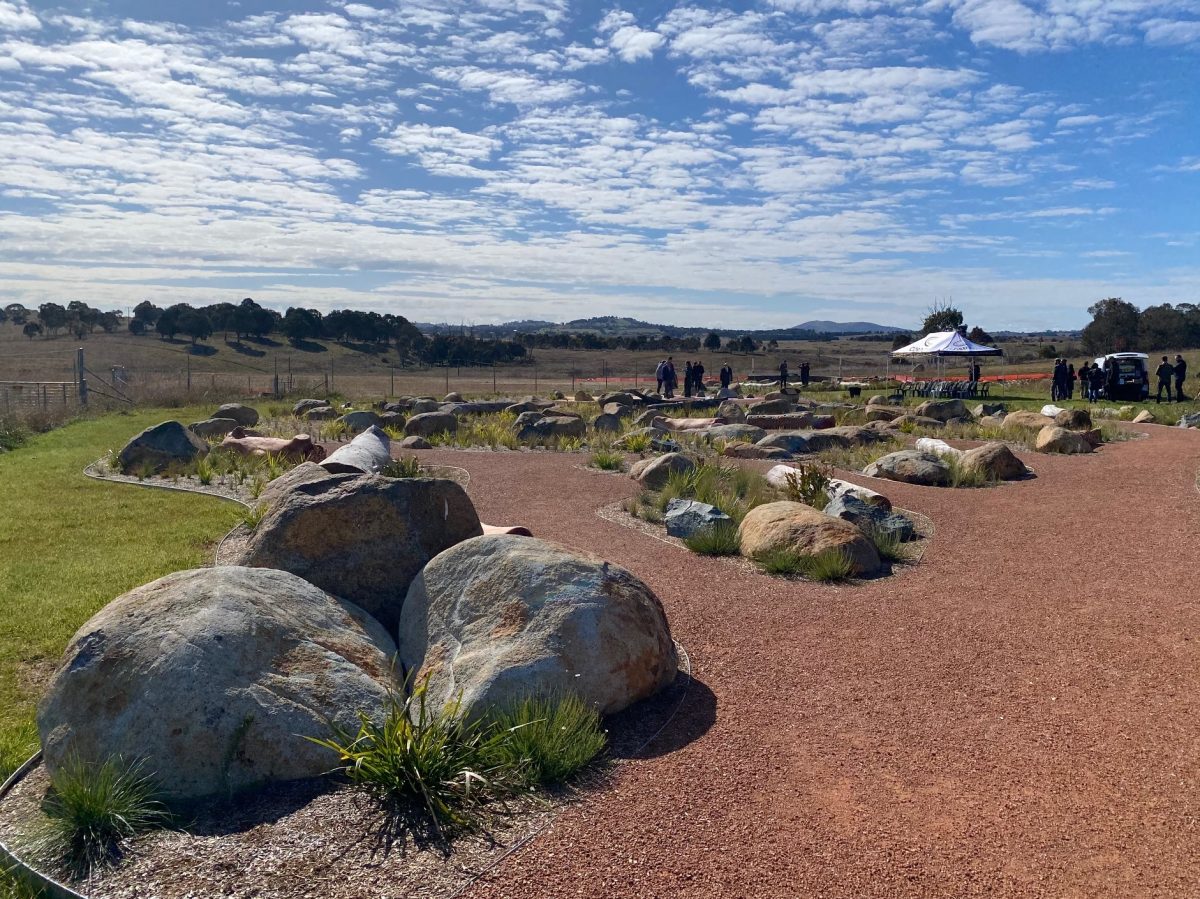
A cultural garden marks the entrance to the restored area of the grassland. Photo: Claire Fenwicke.
Aunty Mary said it was an “honour” to see their culture celebrated as part of the landscape, as well as the efforts to conserve and protect native flora and fauna.
More than 25,000 plants and 130 kg of native grass seed were planted as part of the remediation works to give more habitat back to the endangered Golden Sun Moth, which lives in the area.
“Through colonisation, we’ve had so many animals and flora be brought into our landscape, and it’s really important to us that these types of places – when they’re being restored – they restore our native plants back into the landscape,” Aunty Mary said.
Parks and Conservation Service senior project manager Dr Darren Le Roux was involved with the process from its design through to construction.
The project involved three stages: remediating the legacy from the West Belconnen Sewerage treatment plant, which had led to ground issues in the area; directing stormwater from MacGregor to Ginninderra Creek; and the entry garden itself to showcase the cultural and ecological significance of the project.
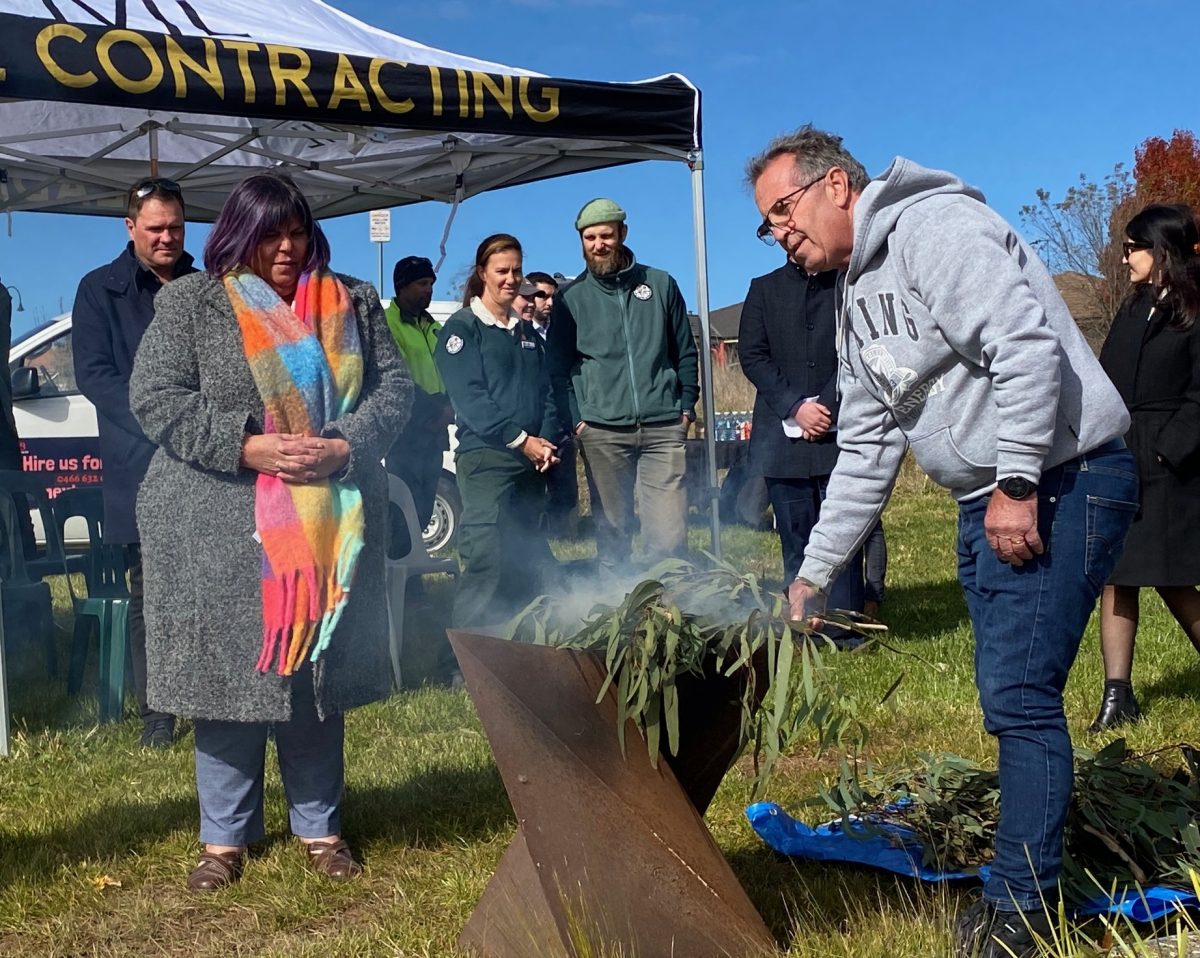
Uncle Stephen performing a smoking ceremony to mark the completion of the Jarramlee-West MacGregor Grasslands Nature Reserve project. Photo: Claire Fenwicke.
Dr Le Roux said the team worked with local Ngunnawal artists to develop the stories depicted on the carved logs and rocks in the garden.
“All of them are telling the story of connection to grasslands, connection to water or to corroboree sites in this area, which are still very important to Ngunnawal culture,” he said.
The site will be used by the ACT Government as an example of how to transform other ecological spaces while also recognising local culture and heritage, with Planning and Land Management Minister Mick Gentleman saying this was “just the start”.
“We want to do more work, and it shows us how we can remediate these areas that were used for different purposes in the past and provide for better environmental habitat for endangered species, and also to tell that history of Ngunnawal people at the same time,” he said.
For Dr Le Roux, that’s his hope as well.
“These projects are great at showcasing what we can achieve when we work with community to deliver a space like this, and I think that’s a lesson to be learned: consult early with community and it’s amazing what we can achieve together.”
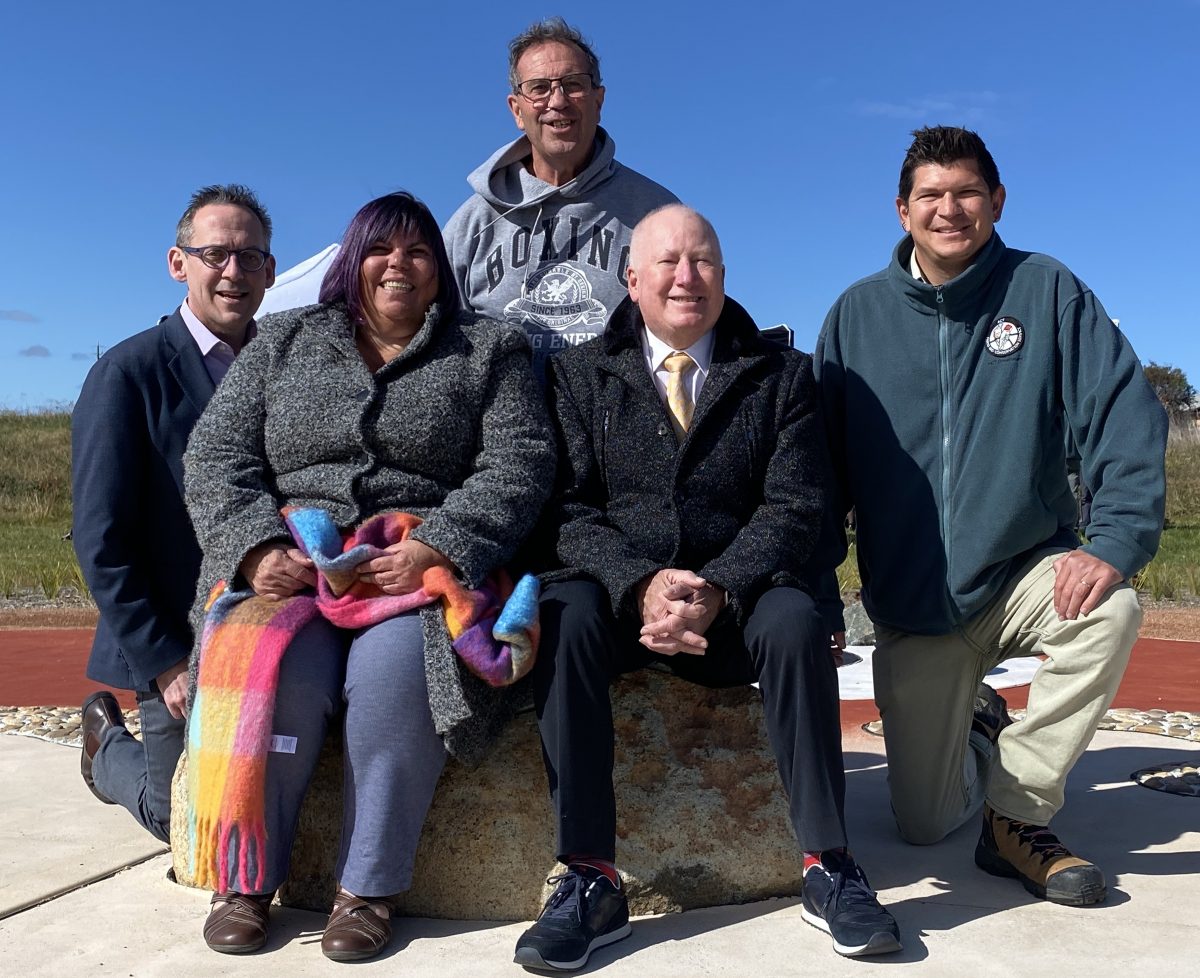
EPSDD deputy director general Geoffrey Rutledge, Aunty Mary, Uncle Stephen, Minister Mick Gentleman and Parks and Conservation senior project manager Dr Darren Le Roux at the celebration of the Jarramlee grasslands project. Photo: Claire Fenwicke.
As for Aunty Mary and Uncle Stephen, they hope the Jarramlee cultural garden will be a place that everyone can enjoy and use as a chance to educate themselves about our cultural history.
“To learn more about our people and our story of this place, and to be able to come to this location and sit and reflect, and just decompress,” Aunty Mary said.
“We’re so close to suburbia but at the same time we have such a natural space here that can help people reconnect with our country and have a quiet experience that rejuvenates and regenerates their personal health and wellbeing.”












